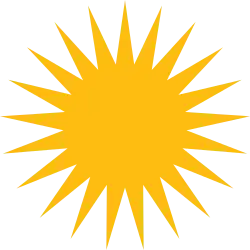The oldest known examples of Kurdish art and expression have been found in Neolithic sites like Çayönü and Jarmo (present-day Iraqi and Turkish Kurdistan); these findings include pottery, adornments, and cemeteries.[1][2][3]
Prehistoric
Ancient
Medieval
Islamic
Modern art
1870-1970
Contemporary (1970-present)
References
- ^ Braidwood, Linda S (1983). Prehistoric archeology along the Zagros Flanks. Oriental Institute of the University of Chicago; Iraq-Jarmo Prehistoric Project (1950-1955). OCLC 679889989.
- ^ "ancient Kurdish settlement". iletisim.gov.tr.
- ^ Özdoğan, Mehmet (2014), "Çayönü: Agriculture and Domestication", Encyclopedia of Global Archaeology, Springer, New York, NY, pp. 1194–1197, doi:10.1007/978-1-4419-0465-2_2223, ISBN 978-1-4419-0465-2, retrieved 2025-07-10
Further reading
- Korangy, Alireza; Kreyenbroek, Philip G. (2020). Kurdish art and identity: verbal art, self-definition and recent history. Berlin: De Gruyter. ISBN 978-3-11-059962-6.
- Sustam, Engin (2021). "Kurdish Art and Cultural Production: Rhetoric of the New Kurdish Subject". In Gunes, Cengiz; Bozarslan, Hamit; Yadirgi, Veli (eds.). The Cambridge History of the Kurds. Cambridge: Cambridge University Press. pp. 775–802. ISBN 978-1-108-47335-4. Retrieved 2025-07-10.
